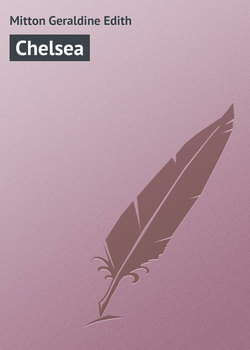Читать книгу Chelsea - Mitton Geraldine Edith - Страница 4
PART I
HISTORY
ОглавлениеThe first recorded instance of the mention of Chelsea is about 785, when Pope Adrian sent legates to England for the purpose of reforming the religion, and they held a synod at Cealchythe.
In the reign of Edward the Confessor Thurstan gave Chilchelle or Chilcheya, which he held of the King, to Westminster Abbey. This gift was confirmed by a charter which is in the Saxon language, and is still preserved in the British Museum. Gervace, Abbot of Westminster, natural son of King Stephen, aliened the Manor of Chelchithe; he bestowed it upon his mother, Dameta, to be held by her in fee, paying annually to the church at Westminster the sum of £4. In Edward III.’s reign one Robert de Heyle leased the Manor of Chelsith to the Abbot and Convent of Westminster during his own lifetime, for which they were to make certain payments: “£20 per annum, to provide him daily with two white loaves, two flagons of convent ale, and once a year a robe of Esquier’s silk.” The manor at that time was valued at £25 16s. 6d. The Dean and Chapter of Westminster hold among their records several court rolls of the Manor of Chelsea during the reigns of Edward III. and Richard II. With the exception that one Simon Bayle seems to have been lessee of the Manor House in 1455, we know nothing definite of it until the reign of Henry VII., after which the records are tolerably clear. It was then held by Sir Reginald Bray, and from him it descended to his niece Margaret, who married Lord Sandys. Lord Sandys gave or sold it to Henry VIII., and it formed part of the jointure of Queen Catherine Parr, who resided there for some time with her fourth husband, Lord Seymour.
Afterwards it appears to have been granted to the Duke of Northumberland, who was beheaded in 1553 for his attempt to place Lady Jane Grey on the throne. The Duchess of Northumberland held it for her life, and at her death it was granted to John Caryl, who only held it for a few months before parting with it to John Bassett, “notwithstanding which,” says Lysons, “Lady Anne of Cleves, in the account of her funeral, is said to have died at the King and Quene’s majestys’ Place of Chelsey beside London in the same year.”
Queen Elizabeth gave it to the Earl of Somerset’s widow for life, and at her death it was granted to John Stanhope, afterwards first Lord Stanhope, subject to a yearly rent-charge. It is probable that he soon surrendered it, for we find it shortly after granted by Queen Elizabeth to Katherine, Lady Howard, wife of the Lord Admiral. Then it was held by the Howards for several generations, confirmed by successive grants, firstly to Margaret, Countess of Nottingham, and then to James Howard, son of the Earl of Nottingham, who had the right to hold it for forty years after the decease of his mother. She, however, survived him, and in 1639 James, Duke of Hamilton, purchased her interest in it, and entered into possession. He only held it until the time of the Commonwealth, when it was seized and sold; but it seems that the purchasers, Thomas Smithby and Robert Austin, only bought it to hold in trust for the heirs of Hamilton, for in 1657 Anne, daughter and coheiress of the Duke of Hamilton, and her husband, Lord Douglas, sold it to Charles Cheyne. He bought it with part of the large dower brought him by his wife, Lady Jane Cheyne, as is recorded on her tombstone in Chelsea Church. Sir Hans Sloane in 1712 purchased it from the then Lord Cheyne. He left two daughters, who married respectively Lord Cadogan and George Stanley. As the Stanleys died out in the second generation, their share reverted by will to the Cadogans, in whom it is still vested.
